Tirgan Festival; Water Festival in Iran from Ancient Times
The Tirgan Festival, a captivating celebration deeply rooted in Iran's cultural history, stands as a testament to the enduring significance of water in the lives of Iranians.
As a country with a history spanning millennia, Iran has a profound connection to its ancient traditions, and the Tirgan Festival is one such tradition that continues to thrive to this day. This festival, held in high regard across the nation, magnificently captures the essence of water's importance within Iranian culture and the symbolic resonance it holds.
In this article, we will delve deeper into the historical origins of the Tirgan Festival, exploring its transformation over the ages while uncovering the intricate threads that tie it to water's profound symbolism. Together, we will discover how the Tirgan Festival weaves a tapestry of cultural heritage, bridging the gap between Iran's storied past and its promising future.
Historical Background

The origins of the Tirgan Festival can be found deeply embedded in the tapestry of ancient Persian traditions. This celebration, brimming with cultural richness, has evolved over centuries, yet its essence harks back to a time when the rhythms of life were intimately connected to the elements of nature, particularly the life-giving element of water.
In ancient Persian traditions, the reverence for water was not merely a casual sentiment, but a fundamental aspect of daily life. The inhabitants of this fertile land, nestled between mountains and deserts, understood that water was the key to prosperity and survival. Rivers, such as the mighty Zayandehrud and Karun, lakes like Urmia and Hamun, and the splendid fountains that adorned cities, all played roles far beyond their utilitarian functions. They were sacred sources of life, and their significance was woven into the fabric of Persian culture.

The Tirgan Festival, rooted in the heritage of ancient Persia, encapsulates this significance with grace and jubilation. It marks a time when communities would gather by riversides, lakeshores, and fountains to pay homage to the life-sustaining element that blessed their lands. The festival's rituals, ranging from splashing water to engaging in cheerful water fights, are not just playful traditions; they are the echoes of a time when every drop of water was a treasure, and its conservation was paramount.
As time flowed forward, the Tirgan Festival adapted and transformed, reflecting the shifting tides of history. From its early origins by riverbanks, the festival found its way into the hearts of Iranian communities, even as cities grew larger and more diverse. Despite the changes that modernization brought, the festival endured, a testament to its unwavering importance in Iranian culture.
Today, as we reflect on the Tirgan Festival's historical background, we recognize that it is more than just a celebration – it is a living connection to ancient Persia, a window into the profound relationship between water and human life. The Tirgan Festival continues to weave its magic, reminding us that the preservation of cultural heritage and the acknowledgment of the environment's significance are threads that should never be broken.
| Learn more: Iranian New Year | Nowruz!
Tirgan Festival Celebrations
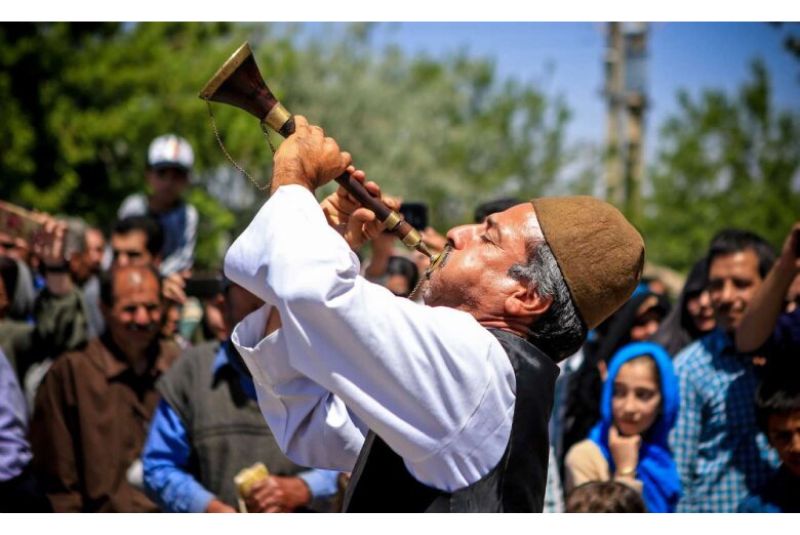
Main Features And Rituals
The Tirgan Festival is a tapestry woven with captivating rituals and vibrant celebrations that encapsulate the essence of water's profound significance in Iranian culture. This annual event, celebrated with exuberance and reverence, brings together communities in a symphony of water-related activities, music, dance, and delectable cuisine. As the festival unfolds, it offers a unique glimpse into the heart of Iran's cultural heritage.
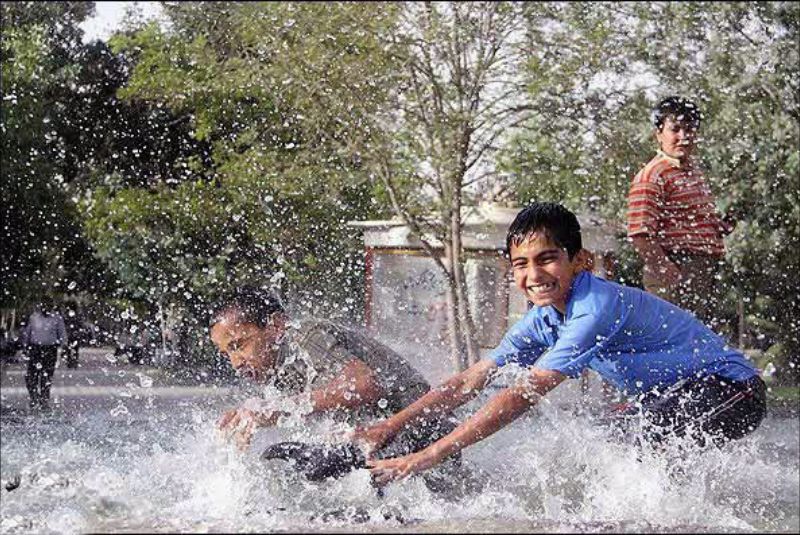
Water-Related Activities
At the heart of the Tirgan Festival lies a joyful immersion in water-related activities. Laughter fills the air as people young and old come together to engage in spirited water fights, their playful splashes echoing the jubilant spirit of the occasion. This shared experience not only rejuvenates the body but also rekindles the collective spirit that has animated generations of Iranians.
| Suggestion: Persian Garden | A Piece of Paradise in Iran
Music And Dance
Accompanying the watery revelry are traditional music, dance, and performances that amplify the festival's vibrancy. The rhythmic melodies of traditional instruments, such as the tar and the daf, intertwine with the joyous sounds of participants, creating an atmosphere of celebration that transcends time. Dances that have been passed down through generations take center stage, embodying the fusion of culture, history, and identity that defines the Tirgan Festival.
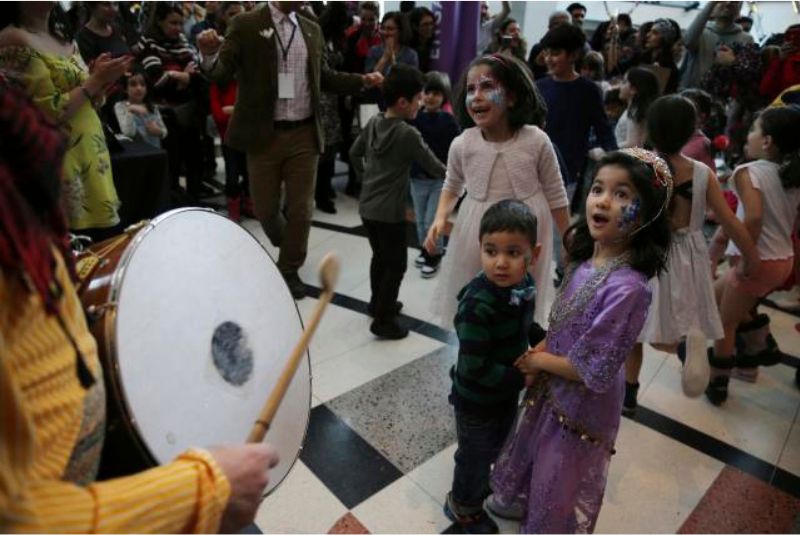
Special Foods
No celebration is complete without a feast, and the Tirgan Festival is no exception. Special foods and dishes, lovingly prepared for the occasion, take center stage, tantalizing the taste buds and symbolizing the festive nature of the event. Traditional delicacies such as "Ash Reshteh," a hearty noodle soup, and "Faloodeh," a refreshing dessert made with thin noodles and rose water, grace the tables of households and community gatherings. Through these culinary delights, the festival pays homage to the culinary traditions that have been cherished for centuries.
Yet, perhaps the most enchanting aspect of the Tirgan Festival lies in its ability to foster a sense of unity and community. It's a time when the boundaries that often separate people dissolve, replaced by a shared appreciation for tradition, culture, and the essence of life itself. This communal aspect extends beyond physical presence, resonating with Iranians across the globe who celebrate the festival as a poignant reminder of their roots.
| Read more: Sama Dance
The Symbolism of Water in Iranian Culture
Water, an element fundamental to life, holds a sacred place in Iranian culture, carrying profound cultural and spiritual symbolism that finds its embodiment in the Tirgan Festival. Within the intricate weave of Iranian belief systems, water is revered as a purifying force, a source of renewal, and a symbol of fertility. As the festival's participants engage in water-related activities, they channel these symbolic meanings, transforming the celebration into a journey of the soul.

In Iranian belief systems, water transcends its physical properties, embodying purity and spiritual cleansing. Just as water flows to cleanse the body, it is also seen as a means to purify the spirit. The act of washing away impurities, both physically and symbolically, takes on a profound significance in the context of rituals and festivals. The Tirgan Festival's water-related activities, including splashing and washing belongings, are reflective of this belief. Participants not only engage in playful merriment but also partake in a ritual of purification, a cleansing of the soul as they immerse themselves in the cool embrace of water.
The connection between water and renewal is a thread that runs through Iranian culture, tying together the Tirgan Festival's celebrations with the rhythms of life and nature. Just as water is a source of renewal for parched landscapes, it is also a metaphor for rejuvenation and growth within the human experience. The festival's customs mirror this concept, allowing individuals to cast off the burdens of everyday life, embracing the opportunity to renew their spirits and strengthen their connections with others.
Fertility, another facet of water's symbolism, speaks to the cycles of creation and life. In Iranian culture, water is often associated with the bounty of the land, and its presence is crucial for agricultural prosperity. The Tirgan Festival, with its water-focused festivities, celebrates this connection by intertwining the themes of fertility and abundance.
| Suggestion: What is Zoroastrianism Religion?
Historical Evolution and Adaptation

The Tirgan Festival, like a river winding through the annals of history, has flowed through different epochs, adapting to the currents of changing societies, politics, and beliefs. This evolution is a testament to the festival's enduring significance and its ability to remain relevant across the ages, solidifying its place as a cherished tradition that continues to thrive in modern times.
The festival's journey traces back to the ancient Persian civilizations, where water held profound cultural and spiritual meanings. As societies transitioned through various dynasties and eras, the Tirgan Festival evolved, intertwining with the fabric of daily life. The festival's early iterations were often characterized by solemn rituals and observances, reflecting the solemnity of the times.
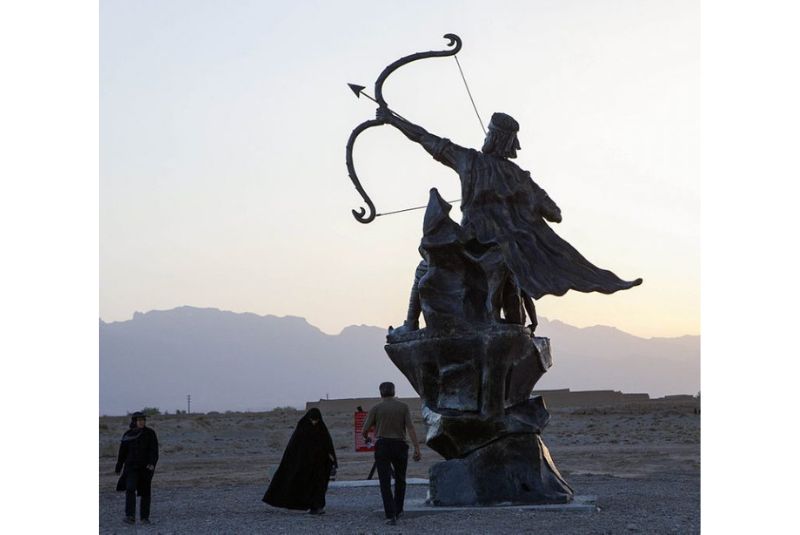
Over time, the Tirgan Festival encountered changing social, political, and religious landscapes. It adapted, embracing new cultural influences while preserving its core essence. During periods of cultural exchange and conquest, the festival absorbed elements from different civilizations, enriching its repertoire of rituals and customs. Even when political shifts altered the course of nations, the Tirgan Festival found ways to persist, often assuming different forms to suit the prevailing ethos.
The festival's journey was not without challenges. As religious ideologies waxed and waned, the Tirgan Festival experienced fluctuations in its popularity. Yet, its resilience shone through. The festival navigated through shifting religious contexts, aligning itself with various belief systems while maintaining its status as a unifying celebration. This adaptability showcased the remarkable ability of the Tirgan Festival to transcend the boundaries of religious dogma, reaffirming its role as a bridge between communities.
In modern times, the Tirgan Festival stands as a harmonious blend of ancient traditions and contemporary sensibilities. Its evolution is a testament to its enduring appeal, appealing to both the nostalgic reverence for the past and the need for cultural preservation in the present. Today's Tirgan Festival is a vivid tapestry, woven from threads of historical lineage and modern creativity.
| Discover: Yalda Night | An Ancient Persian Celebration
Modern-Day Celebrations
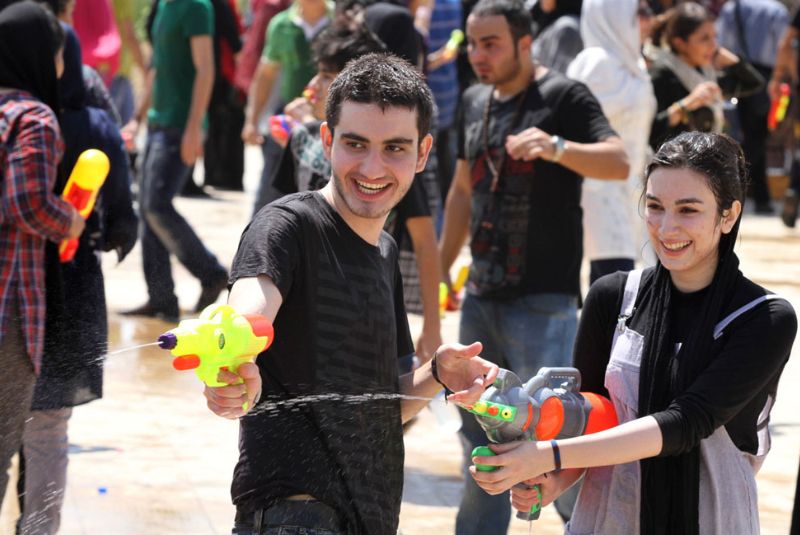
In modern-day Iran, the Tirgan Festival stands as a vibrant testament to the resilience of cultural heritage and the enduring spirit of celebration. This cherished tradition continues to flourish, adapting to the demands of contemporary life while maintaining its core essence, resonating with the hearts of Iranians across the nation.
In contemporary Iran, the Tirgan Festival's celebrations have evolved to reflect the changing dynamics of society. While the core rituals of water-related activities, music, dance, and feasting remain central, new elements have woven themselves into the festival's fabric. With the advent of technology, social media platforms have become avenues for sharing the joy of the festival, connecting people from different corners of the country and the world, fostering a sense of unity and cultural pride.
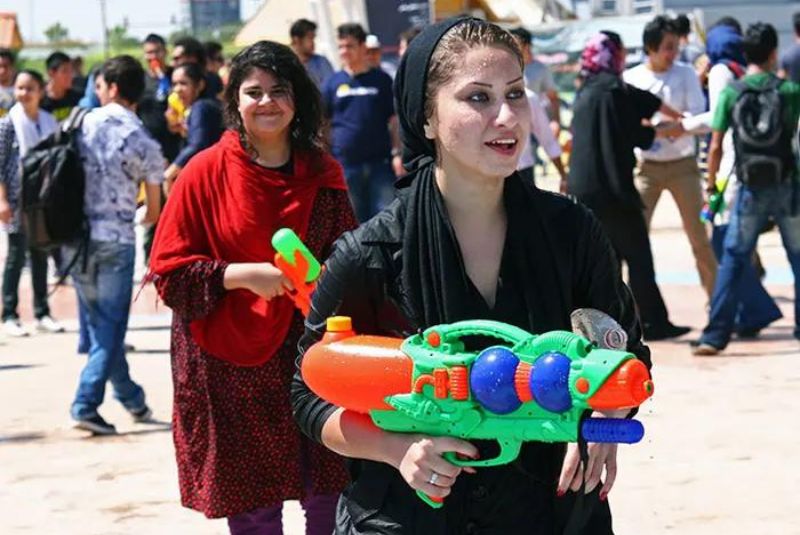
Despite these modern modifications, the essence of the Tirgan Festival remains steadfast. Traditional rituals such as splashing water, engaging in water fights, and sharing traditional dishes continue to evoke the spirit of camaraderie and renewal. The festival's symbolic meanings – purification, renewal, and fertility – resonate as powerfully as they did in ancient times, forging connections between generations and across diverse communities.
| Related: Iranian Festivals and Celebrations
Regional Variations of The Festival
One of the remarkable aspects of the Tirgan Festival is its regional diversity. Across different parts of Iran, the festival takes on unique variations that reflect local traditions, cultures, and natural surroundings. In northern regions, where lush landscapes abound, the festival might manifest with a focus on rivers and lakes, while in arid regions, fountains and artificial water sources might take center stage. These regional variations infuse the festival with a kaleidoscope of experiences, showcasing the festival's ability to adapt while staying true to its core essence.
Today, as Iranians come together to celebrate the Tirgan Festival, they bridge the gap between ancient traditions and modern life, reaffirming their cultural identity while embracing the dynamics of the present. The festival's evolution is a living testament to its ability to thrive in the face of change, transcending time and space to create moments of joy, unity, and shared heritage.
| Also might be interesting: Sizdah Bedar Festival | 13th Farvardin in Iran
Bottom Line
The Tirgan Festival stands as a powerful bridge, connecting the dots between the past and present, culture and spirituality, unity and diversity. It is a reminder that while the world changes, some things remain constant: the need for shared celebrations, the importance of cultural preservation, and the deep-rooted symbolism that shapes a nation's identity. As the festival continues to be celebrated, its significance grows stronger, a testament to its enduring relevance and its role in celebrating the diverse tapestry of Iranian culture.
In every splash of water, every note of music, and every joyful dance, the Tirgan Festival beckons us to honor the heritage that binds us while embracing the future with open arms. It is more than a festival – it is a timeless celebration of life, culture, and the enduring connection between the people of Iran and the water that sustains them.
Share your story!
Comment below and let us know about your Experience.
Your story inspires others!


Comment
Leave a Comment